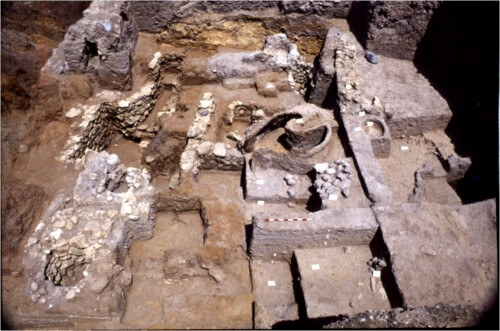"Our research shows that the same processes that are happening today and that cause the neglect or overexploitation of the environment took place already 4000 years ago, even if the technology was different", stated Prof. Michal Artzi and Dr. Dov Tzviali from the Institute of Marine Studies at the University of Haifa

The environmental effects of the processes of urbanization are not something that is characteristic only of modern man and the industrial age and it is possible to find drastic effects of urban development on the ecological environment as early as 4000 years ago, according to a new international study, in which researchers from the University of Haifa are also partners, published in the prestigious journal Nature Scientific Report , from the NATURE group and examined the urban development around the city of Acre. "The perception of a 'golden age' in which our ancestors lived in harmony with nature, while urban development took place according to the ability of the ecosystem to respond, is unfounded in our case. Our research shows that the same processes that are happening today and cause the neglect or overexploitation of the environment took place already 4000 years ago, even if the technology was different", stated Prof. Michal Artzi and Dr. Dov Tzvieli from the Institute of Marine Studies at the University of Haifa, who are partners in the research.
The urbanization processes that human society is going through continue to be one of the most significant processes of our day and have the most significant effects on the environment, when according to estimates, within 30 years 50% of the Earth's inhabitants will be gathered in cities. The common perception is that while today the urbanization processes are taking over and harming the ecosystems, our ancestors thousands of years ago lived in harmony with nature, and the ancient urbanization processes were done according to climate changes and according to nature's ability to absorb human development. In the current study, which was conducted together with Prof. Artzi and Dr. Tzviali and researchers from several universities in France, the researchers wanted to examine whether the urban development in Acre can shed new light on these processes. Acre was chosen as a test case because from its inception, about 6000 years ago in Tel-Acre until the Ottoman period, it was a central city in the eastern Mediterranean. The researchers examined a series of parameters such as changes in the density of trees, variety of species, temperatures, etc., all of this in comparison to other regions in the Mediterranean basin during the corresponding periods.
The first finding that the researchers found is that there are substantial changes in the density of trees in the area around the beginning of the city (in Tel Acre), with the landscape changing from a dense forest to a landscape consisting mostly of bushes in the period between 2000-1300 years BC. The comparison made by the researchers with other regions during this period shows that these changes do not correspond to a significant climatic change in the region. At the same time, the researchers find a massive development of the city - which indicates that the change was the act and will of man, and not a response to a natural ecological change. "The economy of that time, which was based around the Naaman estuary, which was used both as a deficient route and as a basis for agriculture, developed significantly during this time and led to an increase in the city's population. This development, in turn, caused heavy pressure on the ecological environment and the loss of many natural resources", say the researchers.
The researchers even show how the urban development is the one that affected the temperatures in the environment and not the other way around: the increase in population resulted in a more extensive use of water on the one hand and the new large public buildings generated more heat, which caused an increase in temperatures around the city.
The researchers also show that it was human actions that led to the city's decline and not climatic changes or fluctuations of the ecological system to which man was attentive. As soon as Safed replaces Acre as the administrative center of the Mamluk region, the city begins to decline, until it is described in the writings of pilgrims during the Ottoman period as a ghost city.
"The belief in a period of miraculous balance between the ecosystem and man at the beginning of the urbanization process stems mainly from a lack of knowledge about these processes," the researchers conclude.

One response
"...within 30 years 50% of the earth's inhabitants will be gathered in cities..."
Already now a little more than 50% of the earth's inhabitants live in cities